Any work done by yourself brings its own zest, a piece of warmth and coziness to the interior. Be it painting, knitting, wool felting, sewing or embroidery. When a craftswoman creates something with her own hands, she puts into this process not only strength and patience, but also her soul.
- What does unicorn mean in embroidery
- Materials needed for cross stitching a unicorn
- Simple Unicorn Patterns
- Unicorn monochrome cross stitch pattern without colored threads
- Complex and multi-colored cross stitch pattern of a unicorn
- The process of embroidering a unicorn according to the scheme
- Unicorn embroidery with beads
- Embroidery "Peonies" scheme for marriage
- Embroidery Tips
What does unicorn mean in embroidery
Each picture or panel not only carries its own energy, but is also a certain symbol. Any image means something. For example, peonies and poppies are a symbol of joy, passion and well-being, cranes - health and longevity, goldfish - financial success, pomegranate - abundance and prosperity. And unicorn embroidery will contribute to a quick marriage. This animal also symbolizes unity, tenderness, chastity and purity. There is a sign that if a girl makes embroidery with this mythical creature, then in the near future she will marry her loved one.
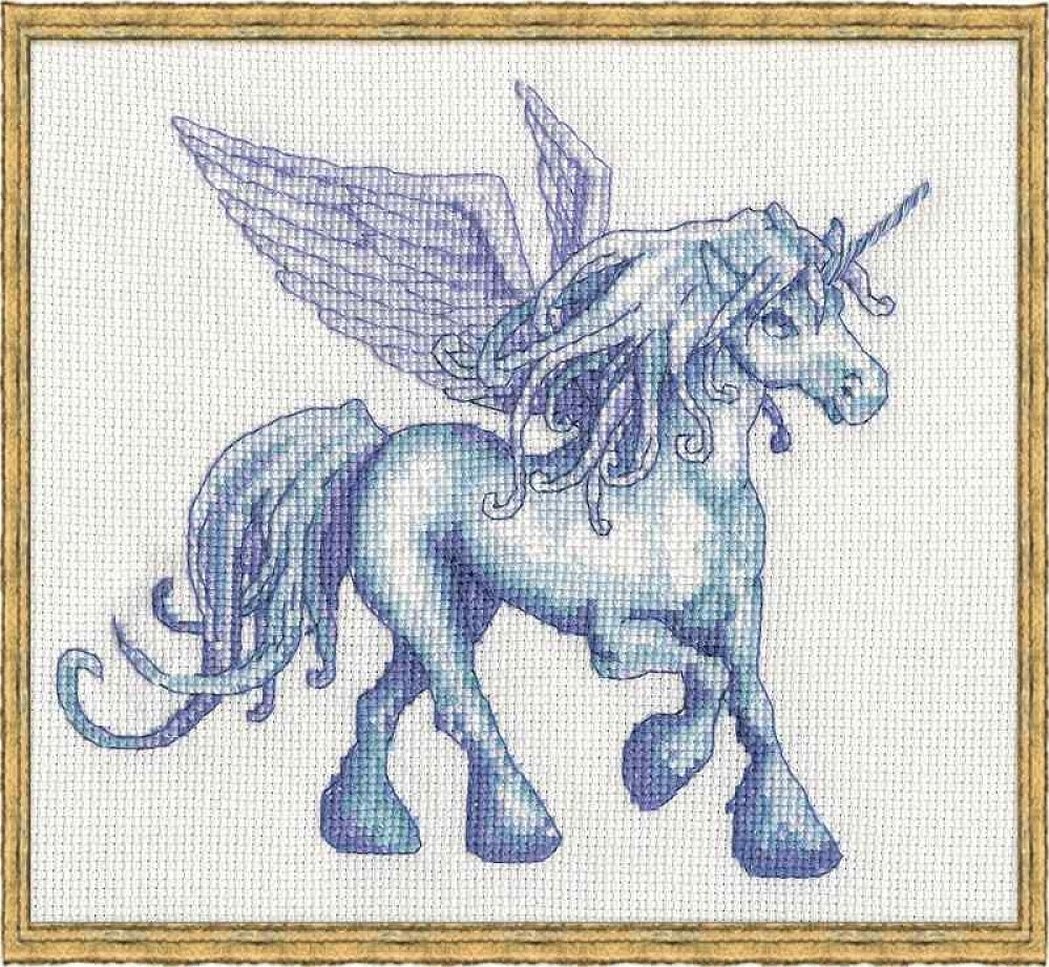
Materials needed for cross stitching a unicorn
Everything you need for cross stitching a unicorn can be purchased at a craft store. There are ready-made embroidery kits that already have everything you need.
What you will need for work:
- Canvas.
- Mouline threads.
- Embroidery needles.
- Hoop.
- Scissors.
- Pencil or special marker for marking.
- A pattern or sketch for cross stitch.
- Additional lighting if needed.
- Thimble.
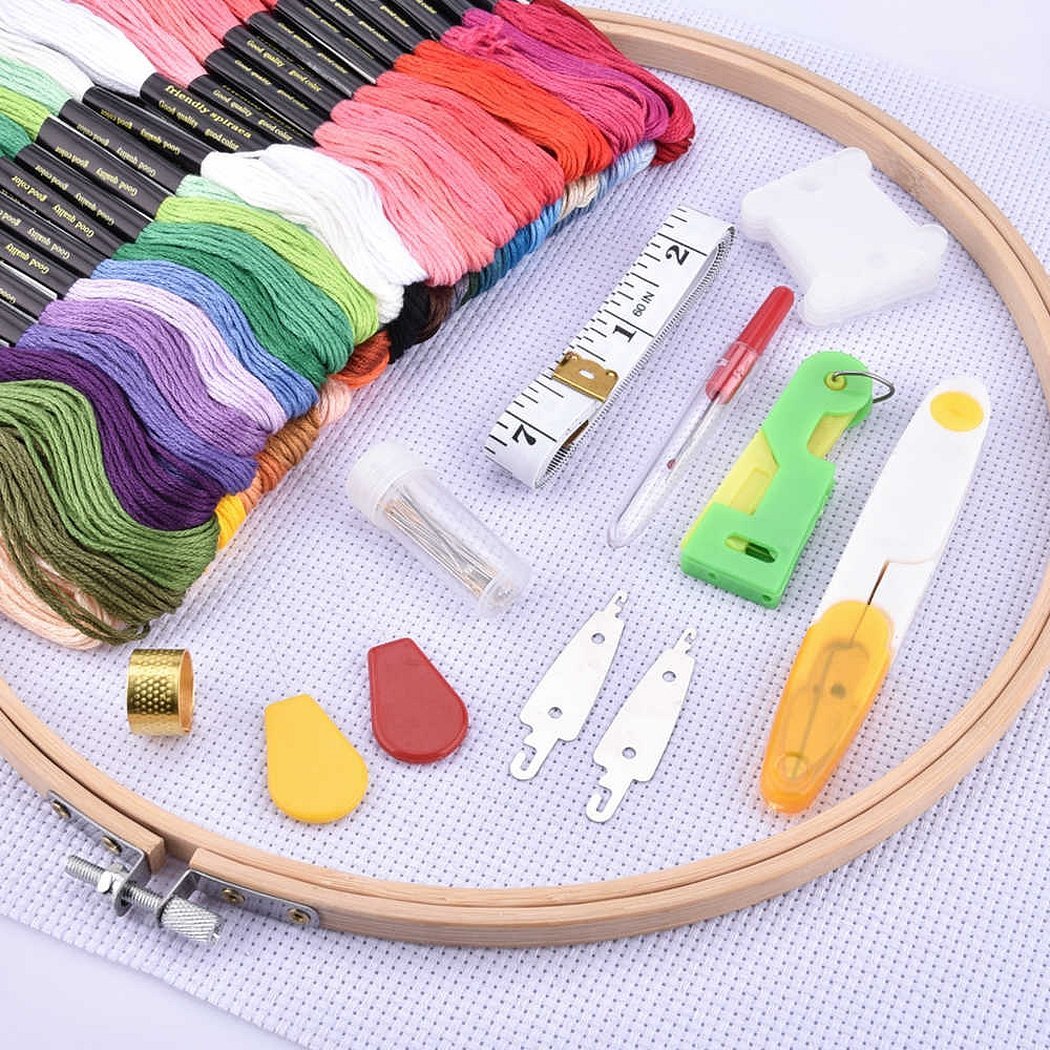
The canvas is the basis of all embroidery, so the final result of the work depends on its choice. For beginners, the best option is "Aida-14". This is a special canvas in the form of a grid. The number indicates how many crosses will fit on one inch. More experienced embroiderers prefer canvas with an even weave. You need to pay attention to the density of the fabric. The denser the canvas, the smaller the cross. But for the very first steps in this type of embroidery, canvas with a pattern applied to it is ideal. This greatly simplifies the selection of threads of the desired color and the work in general.
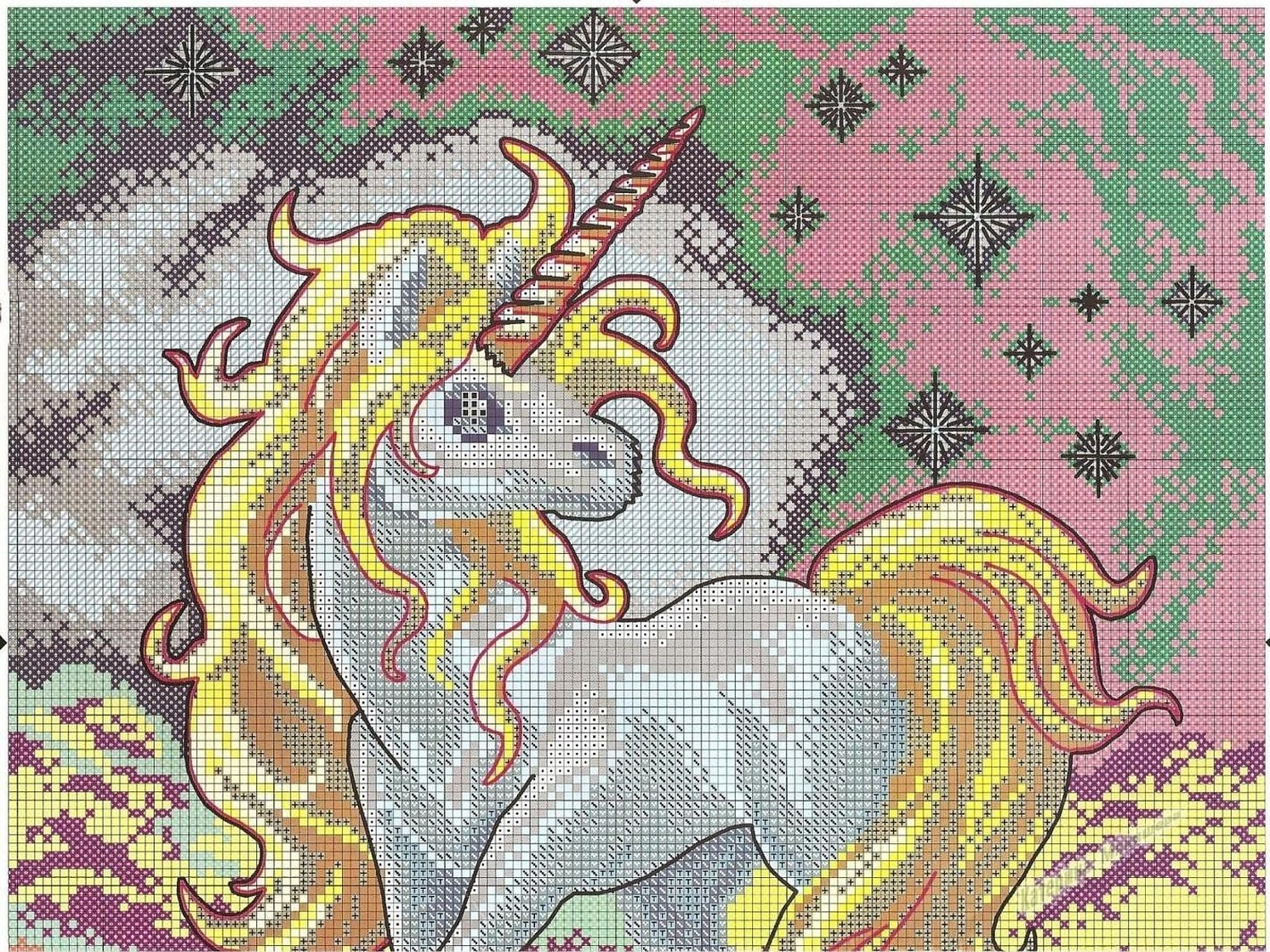
Mouline threads are mainly used for cross stitching. If you choose the wrong threads, the pattern will be deformed. If the base is dense, then the threads should also be dense. Mouline threads consist of 6 folds of 8-10 meters. High-quality threads have a number of advantages over cheap analogues:
- Uniform thickness.
- Color fastness.
- Natural materials.
- They don't get tangled.
To make the finished work look spectacular, you can add metallic threads and beads to the floss. They will add shine and make the picture more original and voluminous.
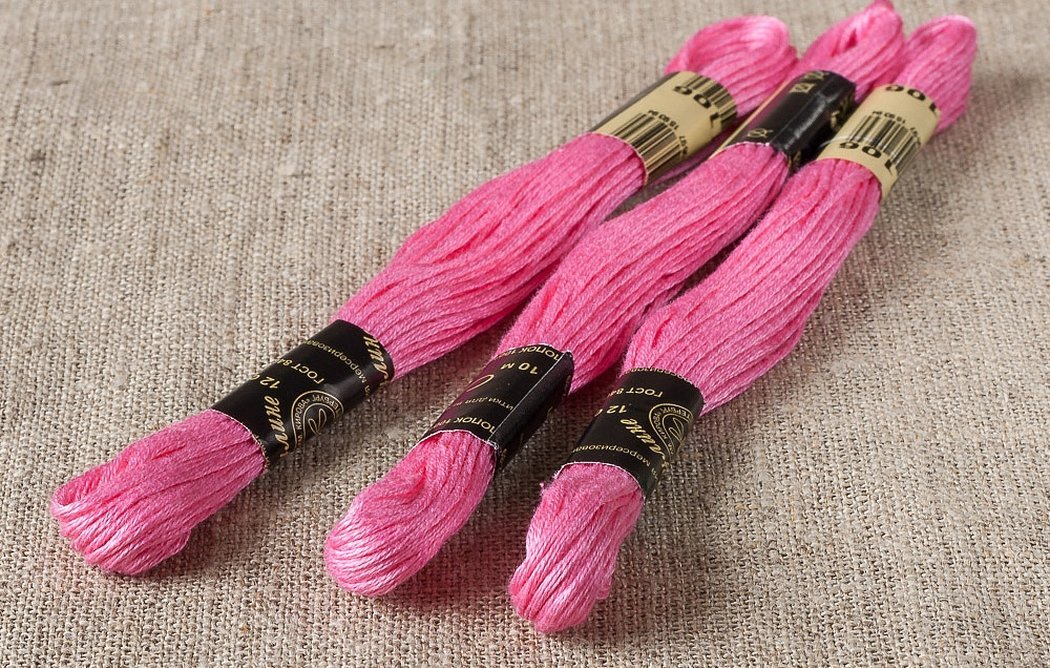
Thanks to the wide variety of needles, the needlewoman can choose them for any base. For cross stitching, use needles with a long eye and a rounded end. Such needles easily pass through the canvas without damaging it. The thread does not fray or fluff. The larger the needle number, the thinner it is. To avoid losing needles, use a needle case.
Hoops are two tight circles with different diameters. They are used to stretch the fabric during embroidery. They can be plastic or wooden. It is convenient to use hoops on a stand. They do not need to be held, they are usually large in size, so they are suitable for making voluminous works.
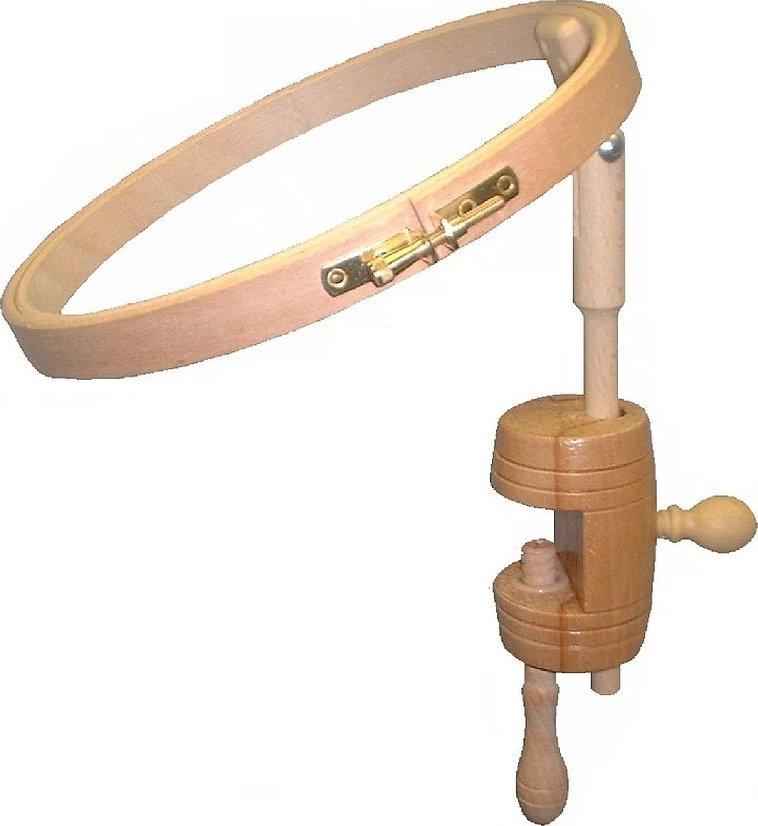
Important! When buying, you need to pay special attention to the surface of the hoop. There should be no roughness or snags on it. Any unevenness can damage the canvas.
It is better to buy small scissors with pointed ends, such as "herons". This tool should not be used to cut paper. Otherwise, they will quickly become dull. Dressmaker's scissors are suitable for cutting canvas.
The most difficult thing for beginner craftswomen seems to be transferring the sketch to the canvas. To mark the pattern, you can use a slate pencil or a special marker.
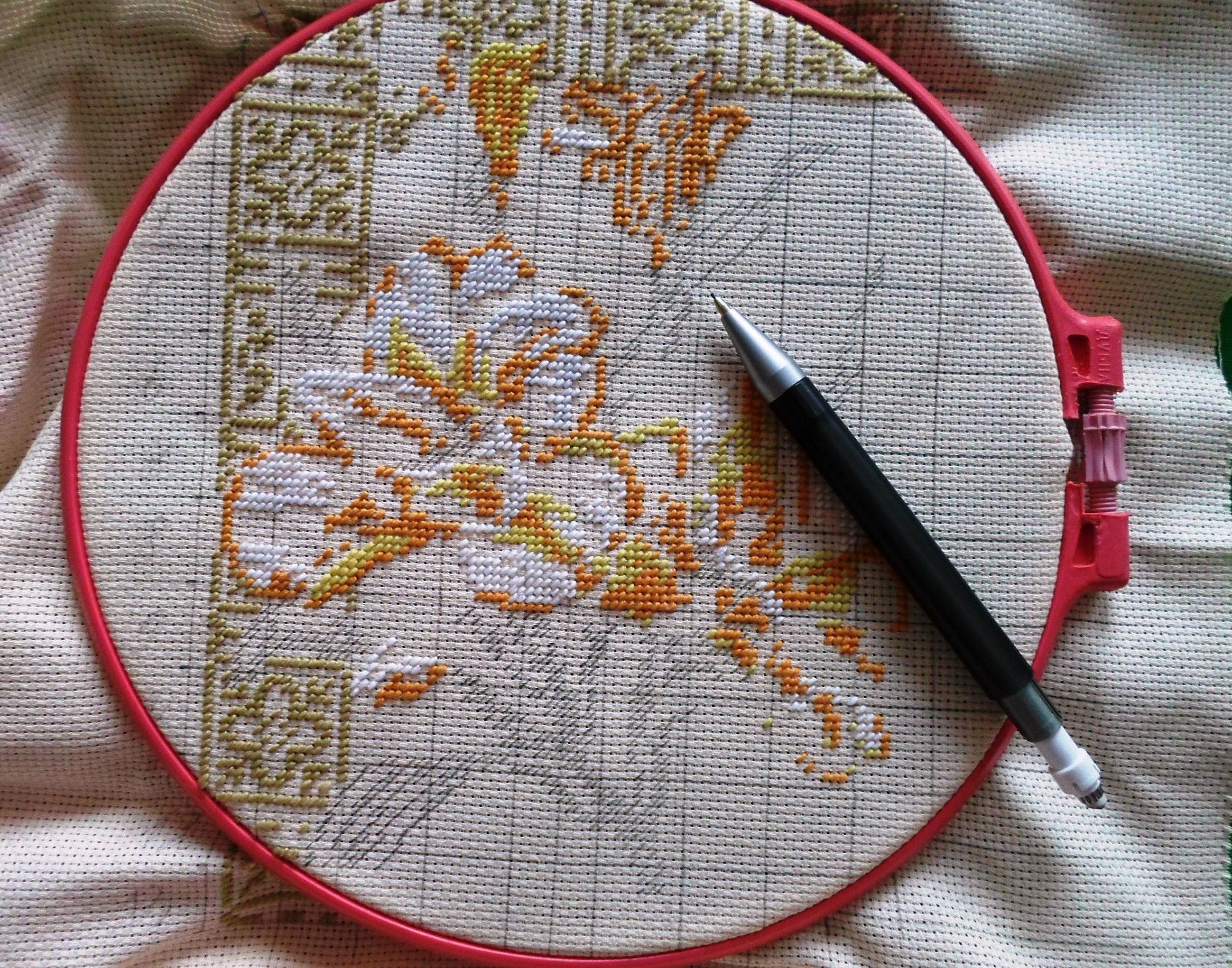
Useful information! Markers come in several types.
Types of markers:
- Disappearing. After some time after application, it is erased by itself.
- Washable. After finishing work, soak the canvas for 30 minutes in cold water. Then wash it carefully by hand and there will be no trace of the marker.
- Indelible. Used to mask canvas gaps in embroidery. Withstands washing, heat treatment and is not afraid of bleach.
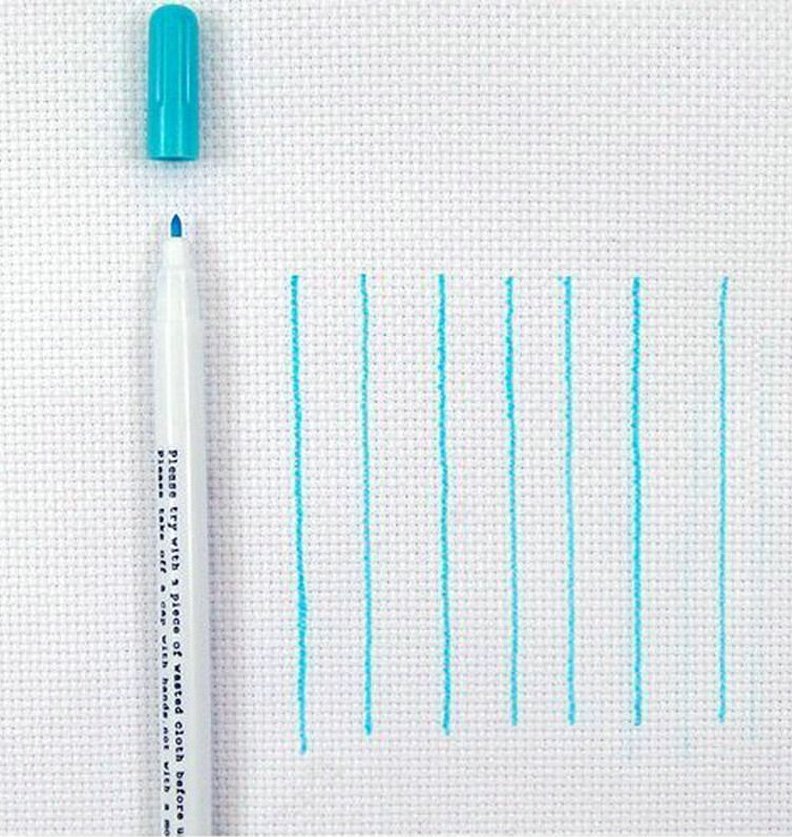
To create cross stitch, special patterns are used. Usually, this is a sheet of paper divided into cells. Each cell is a cross. Patterns can be either colored or black and white. The cells contain special symbols indicating colors. The pattern almost always comes with a key to decipher these symbols. More experienced craftswomen can create sketches themselves from any image.
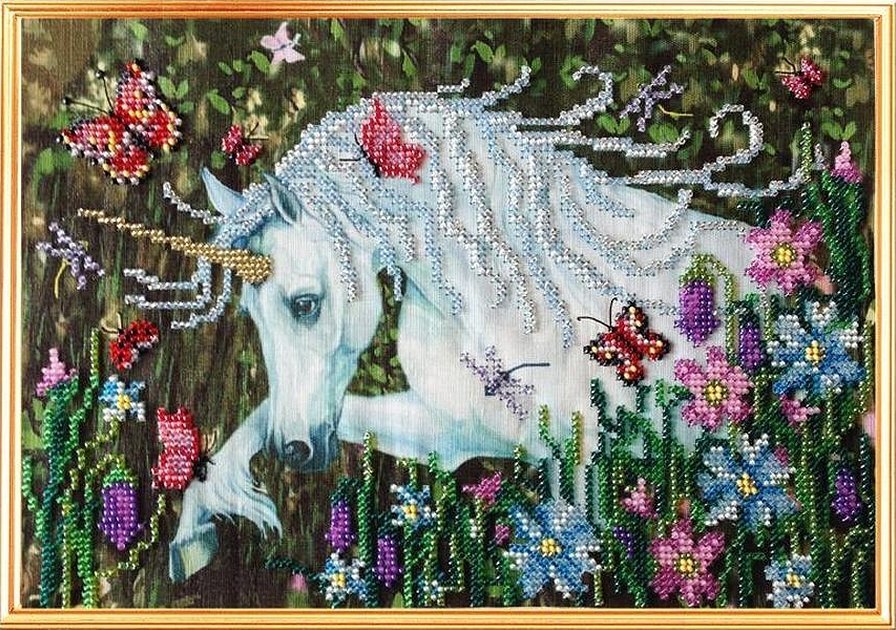
Simple Unicorn Patterns
For the first acquaintance with cross stitching of a unicorn, it is best for beginners to take simple patterns with a minimum number of colors. The best option would be small-sized paintings with large elements.
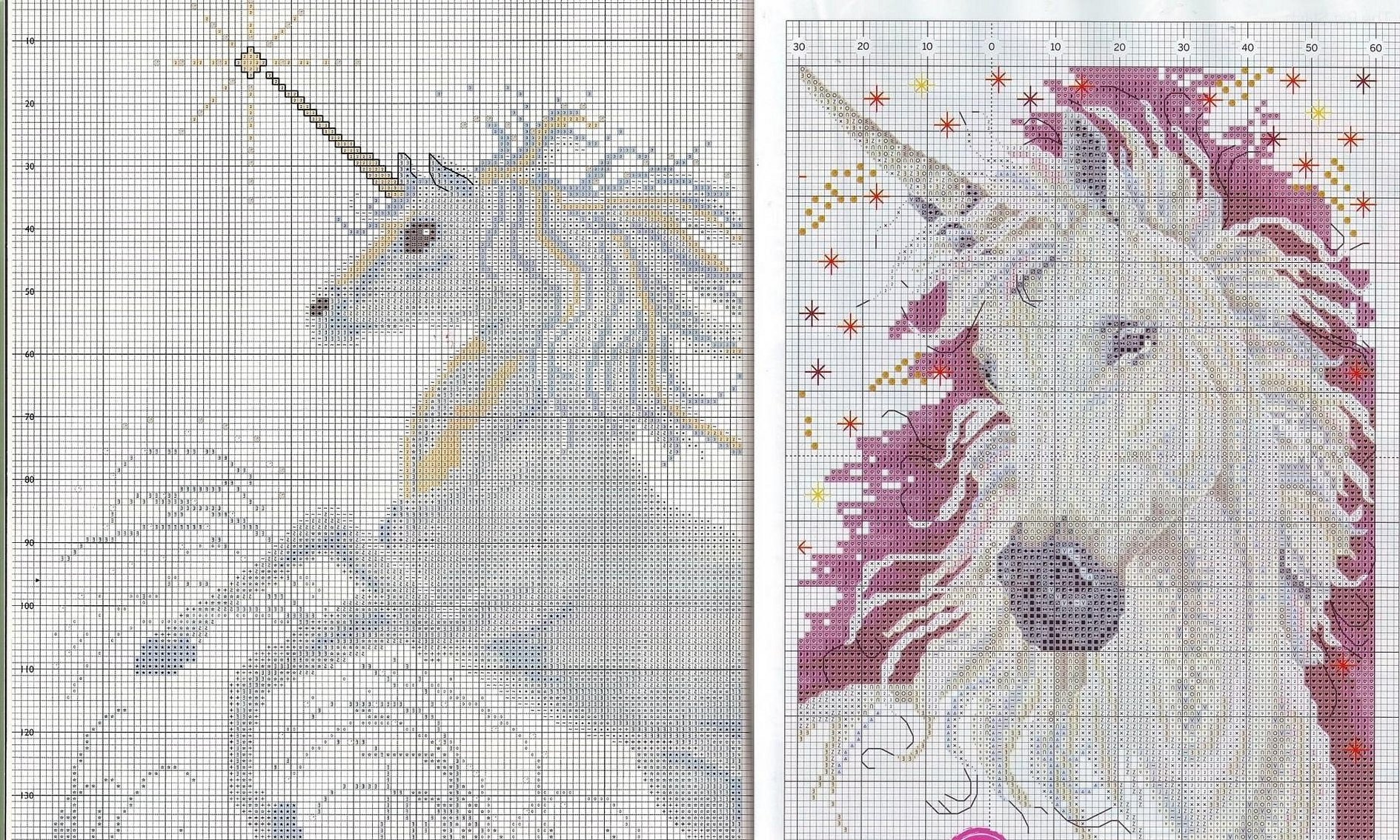
Unicorn monochrome cross stitch pattern without colored threads
Monochrome unicorn cross stitch patterns are also suitable for beginner embroiderers. They will look stylish in the interior. The pattern uses only one color. The floss should be a contrasting color with the canvas. This will make the image brighter. The next step is adding shades. For smooth transitions, you can use melange threads.
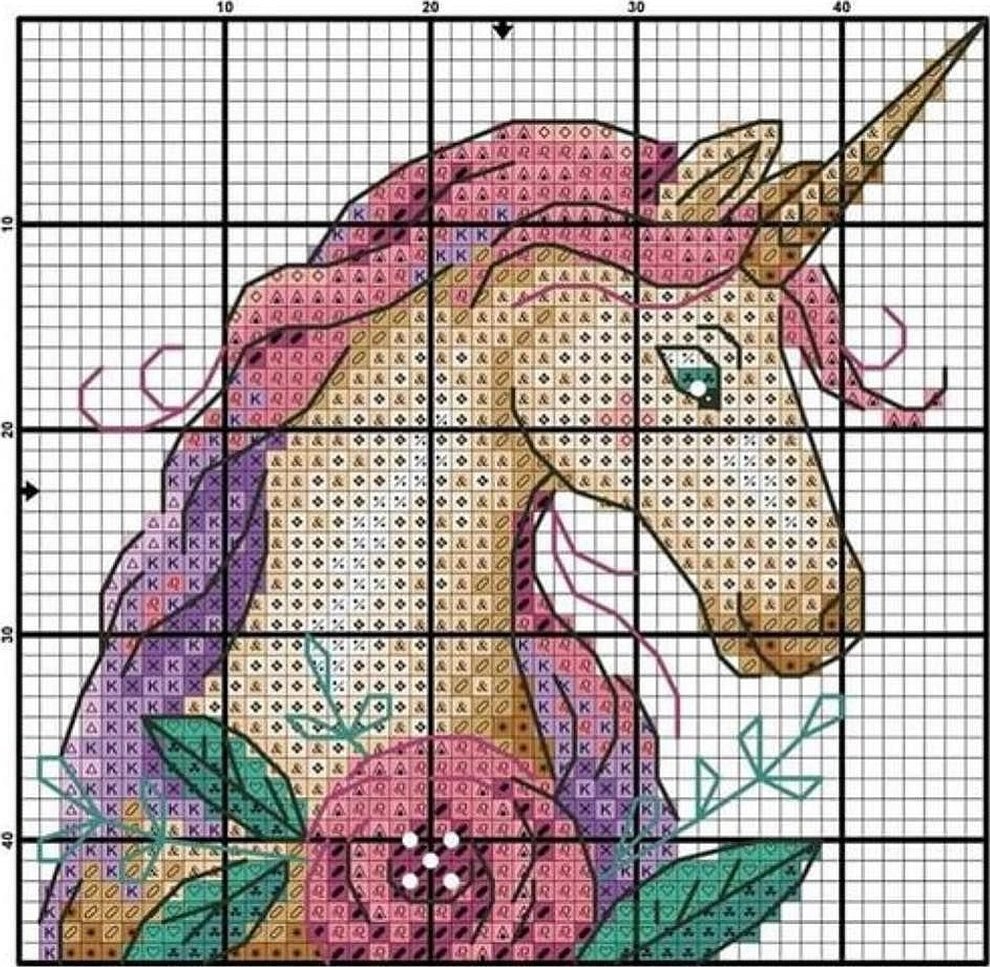
Complex and multi-colored cross stitch pattern of a unicorn
When starting color embroidery, the needlewoman should already have some experience. Otherwise, the process will seem too long and laborious. For a start, you can take something less complicated. Using 5-6 different colors in the work.
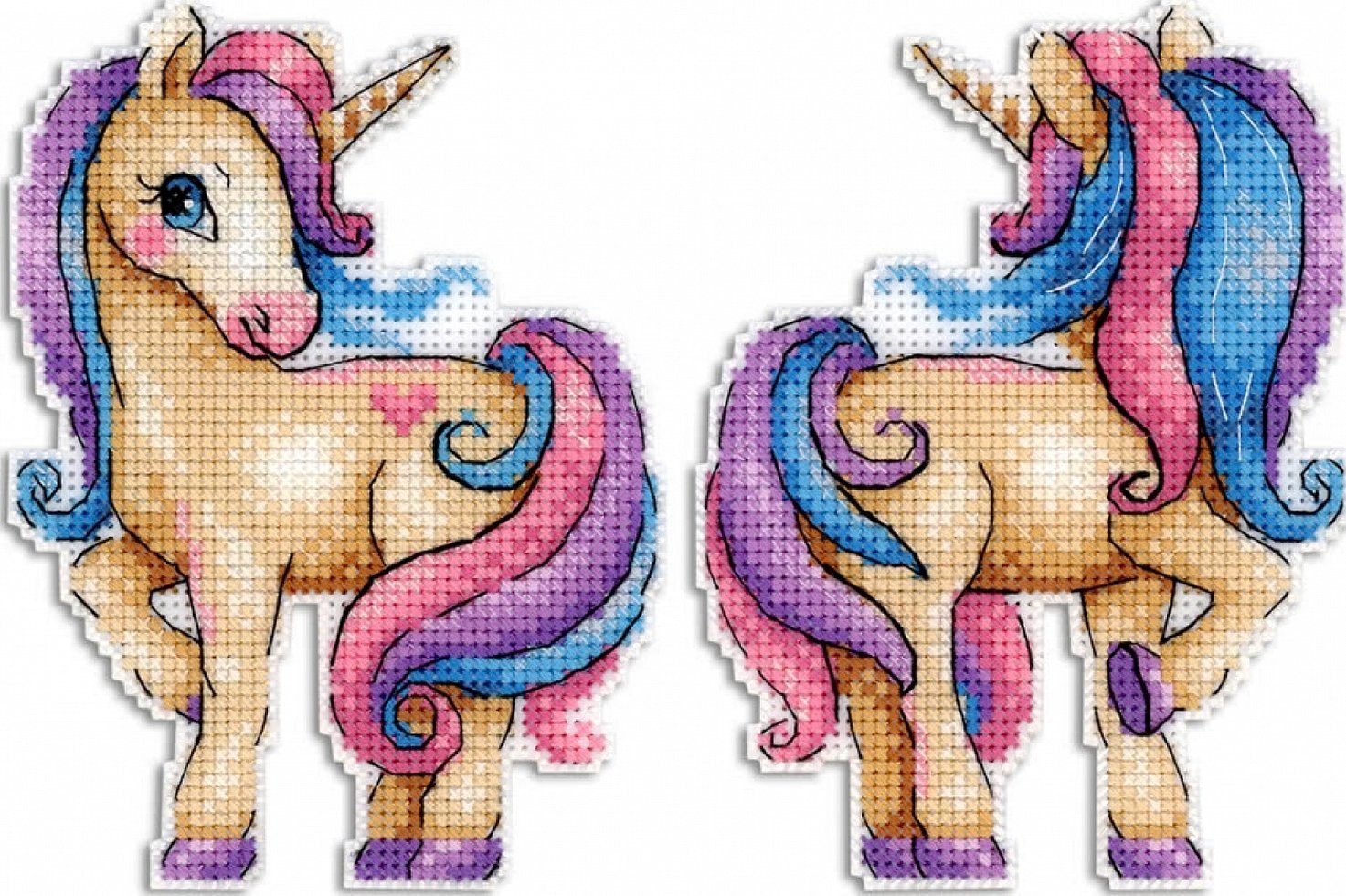
Experienced embroiderers can create stunningly beautiful items. They use a rich palette of colors and in some places add beads or metallic thread. They embroider for several months and in the end they get a real picture.
Attention! For multi-color embroidery, it is better to give preference to European manufacturers of floss. They have a richer palette of colors and shades.
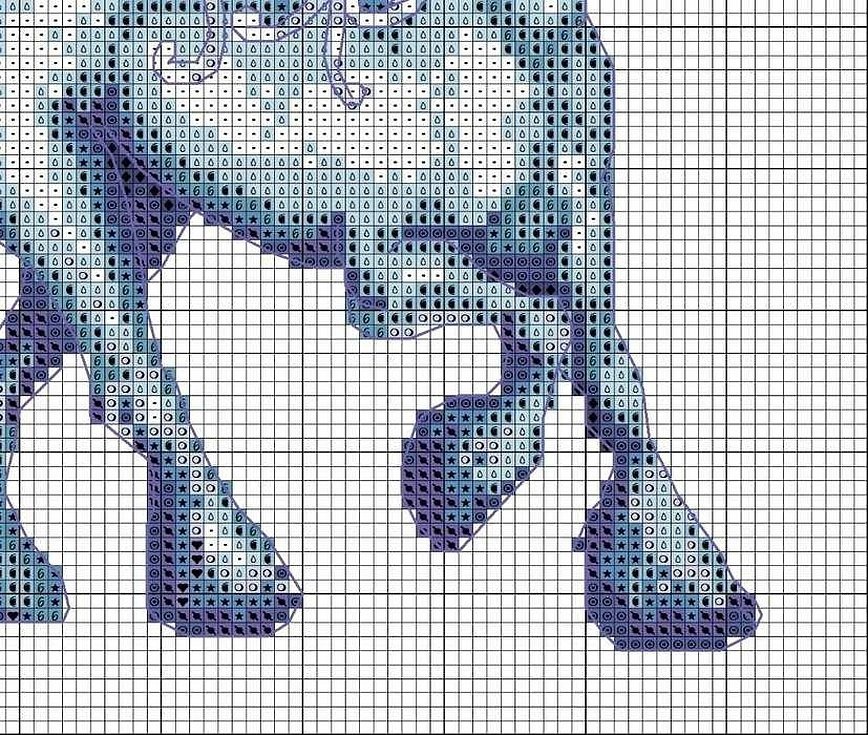
The process of embroidering a unicorn according to the scheme
Like any work, embroidery begins with preparation. During this, the needlewoman should be comfortable. Additional lighting will help preserve vision. Everything necessary should be within arm's reach, so that it is comfortable.
Before starting the work process:
- Take the required piece of canvas with a small margin. It is necessary to check whether the base shrinks.
- If the edges are fraying, they need to be treated with glue or varnish.
- Find the center of the canvas.
- Align the centers of the canvas and the design.
- Apply markings (10*10 cells) with a marker or baste with contrasting thread.
Important! Make stitches in one direction. This will make the work look neater.
There are several methods of embroidery:
- Traditional - crosses are sewn separately, one after another. The first stitch is from the upper right corner to the lower left corner. The second - from the upper left to the lower right.
- The Danish method is to first stitch a row with the first type of stitch from right to left, and then in the opposite direction, forming crosses.
- Skipping stitches is done by passing the thread along the back side.
- A simple diagonal can be created by stitching from top to bottom and then back again.
During the embroidery process, check the number of stitches against the pattern. This will help avoid mistakes. The decoding key contains all the necessary information. Embroidering begins from the center. If the animal in the picture is white, empty cells are not skipped. You can work on them and the unicorn will turn out more voluminous.
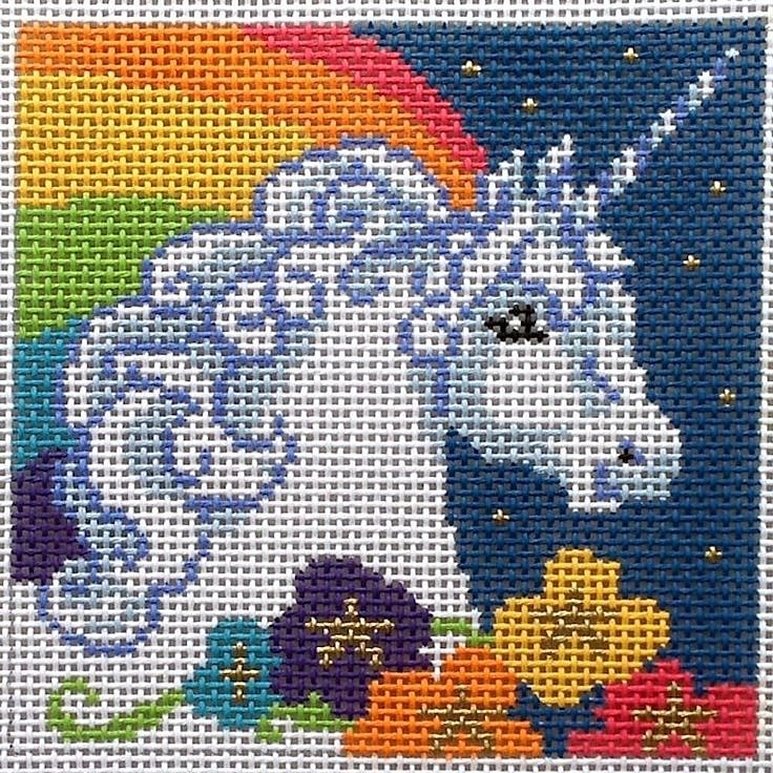
Advice! Unicorn embroidery will look more interesting if you add metallic silver threads when working on the tail and mane. Very often this animal is depicted next to a water surface. Therefore, water drops and splashes can be embroidered with beads. This will add shine and realism to the picture.
Unicorn embroidery with beads
To work, you will need fabric, beads, monofilament and a pencil for drawing. It is recommended to use Czech or Japanese. It is of higher quality than the Chinese analogue. The image is transferred to the canvas with a pencil or marker. For convenience, colors and shades are indicated. Each bead is sewn on separately. Cross stitch patterns can also be used for bead embroidery. But it is better to buy a ready-made set. It includes beads of the required colors, a pattern and fabric.
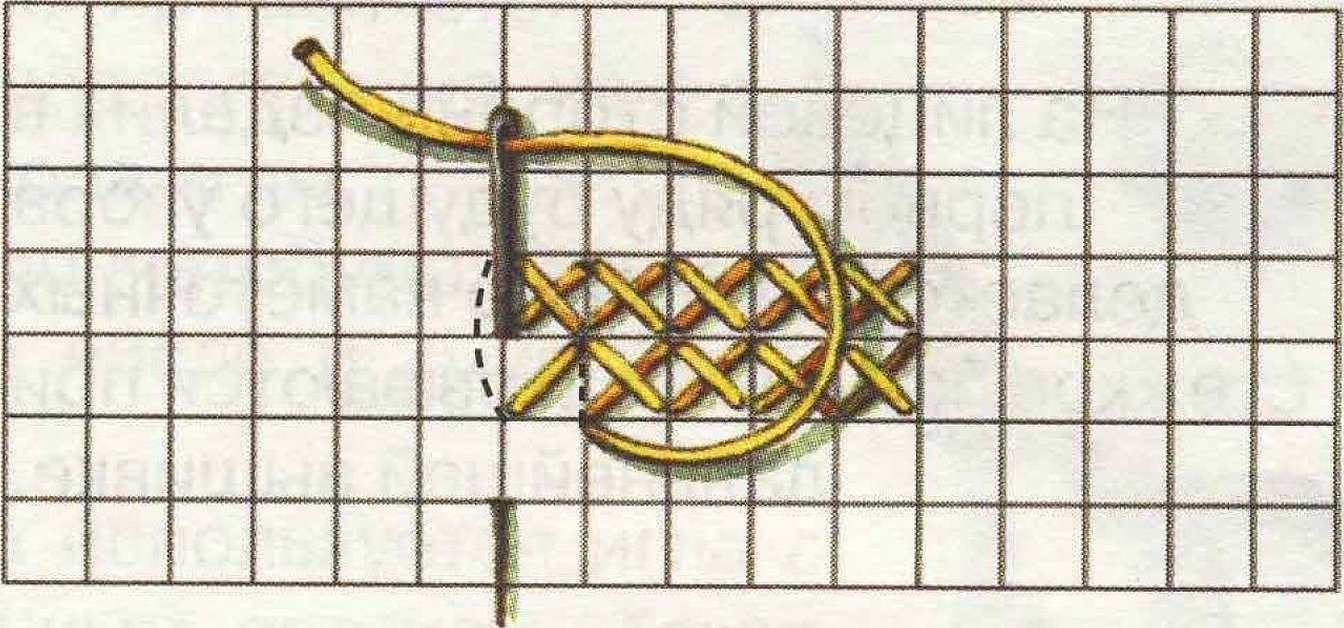
The finished painting is placed under glass to prevent it from getting dusty. Beads get dirty quickly, and frequent wet cleaning will not do any good to the appearance of the product.
Embroidery "Peonies" scheme for marriage
There is an opinion among craftswomen that it is possible to embroider not only a unicorn to get married. Images of paired birds and animals (wolves, horses, swans, cranes, etc.) are also suitable for this. And, of course, peonies. According to the teachings of Feng Shui, they symbolize passion, joy and well-being in the family. In China, they believe that embroidery with peonies will attract a soulmate.

You can choose any pattern you like. The choice of color is of particular importance. Red, white and pink peonies are mainly embroidered.
- Red color means passion, vitality, love.
- The color pink symbolizes tenderness and love.
- White color represents innocence, chastity, purity, spiritual strength.
Each craftswoman decides for herself what to embroider to get married. Any thing made with love is charged by the needlewoman with thoughts and desires with which she worked on the embroidery for more than one week.
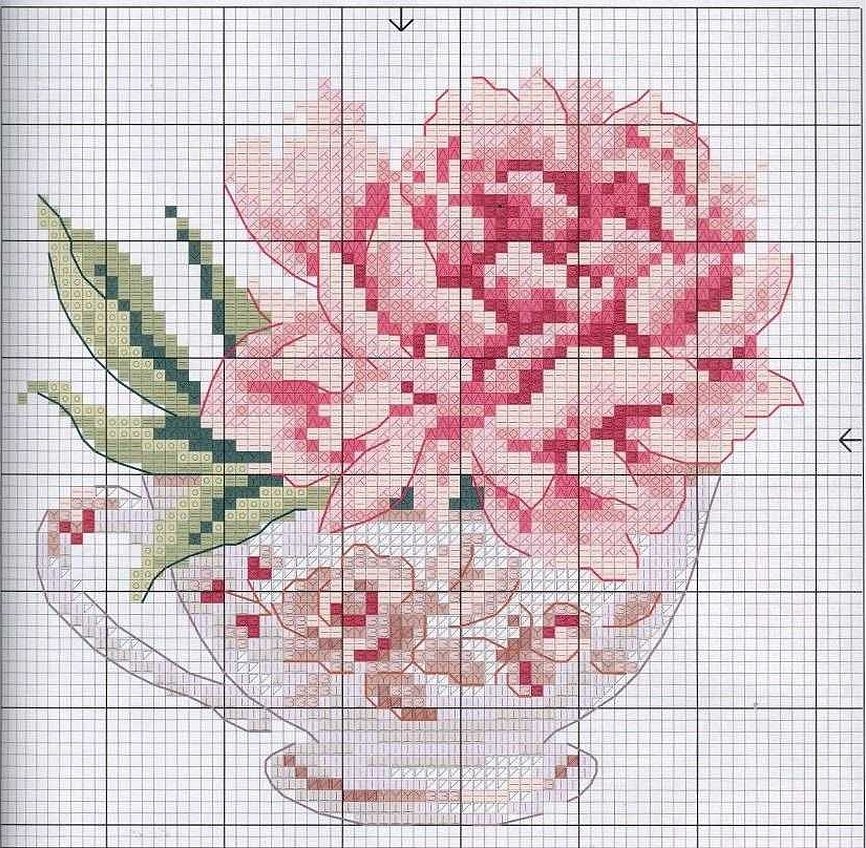
Embroidery Tips
Popular recommendations:
- The stitches should be in the same direction.
- All knots are strictly on the inside.
- Particular attention is paid to the correct sequence of shades in monochrome schemes.
- To begin with, simple designs with large elements are chosen.
- The leftovers may be useful in the future.
- The finished work is washed by hand and framed.
It doesn't matter what unicorn embroidery pattern for marriage a girl chooses. The main thing is that the creative process brings pleasure, and the final result pleases the eye.




